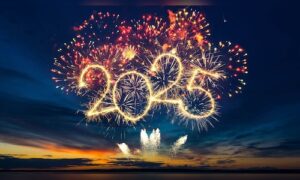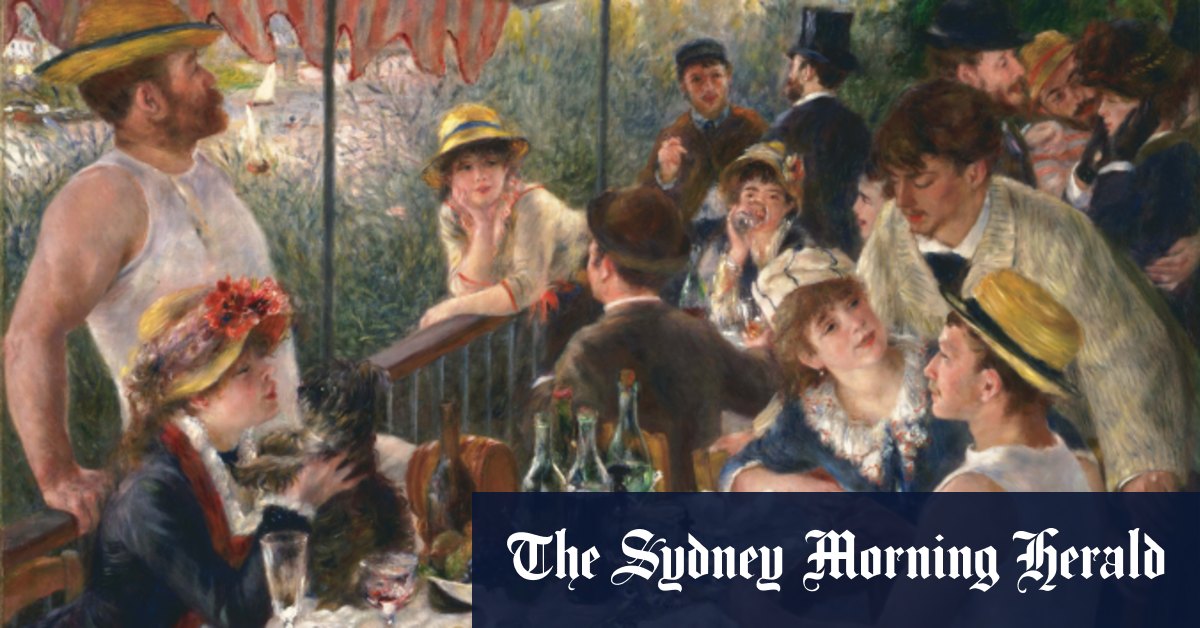
Have you ever looked at a famous painting or piece of art and thought, “Damn, I wish I could’ve been at that party!” That’s me whenever I look at Hieronymous Bosch’s The Garden of Earthly Delights (1490-1510).
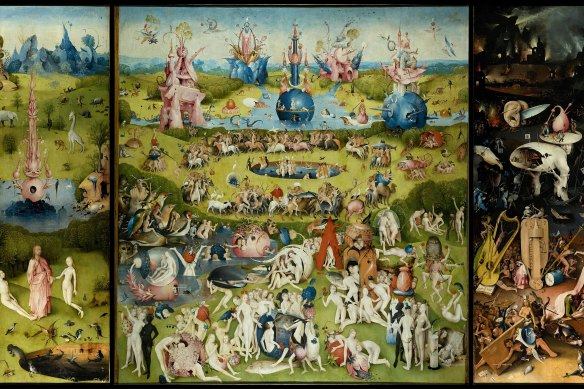
Hieronymous Bosch’s The Garden of Earthly Delights (1490-1510): it’s a lot.
Just kidding. I couldn’t handle that party. Charli XCX (“365 party girl”) couldn’t even handle that party. It makes Jay Gatsby’s parties look like school camp.
But art history is full of great parties. Treat these as inspiration for tonight’s New Year’s Eve celebrations. Just, for your own sake, don’t go the full Bosch.
Luncheon of the Boating Party (1881), by Pierre-Auguste Renoir
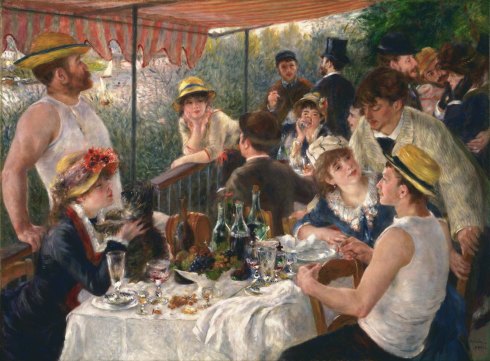
Booze, bros and boater hats: Pierre-Auguste Renoir’s Luncheon of the Boating Party (1881).Credit: Picasa
You probably wish your New Year’s Eve sunset party was this majestically faded. Renoir’s masterpiece gives us a lush gathering in full swing, as you can tell by the empty wine bottles, the picked apart platter of fresh fruit and Castello Blue, and all those beautiful people hunched over each other in a flirtatious haze. Flower Hat is tipsily talking to her terrier, Pin Stripe eagerly crowds his crush, and Tank-Top One (so cool he’s sitting backwards on his chair) is staring yearningly at Tank-Top Two, meaning there’s at least five young adult romance novels in this painting. Meanwhile, Renoir’s Impressionistic swirl adds to the sense of drunken, carefree reverie.
La Danse (1910), by Henri Matisse
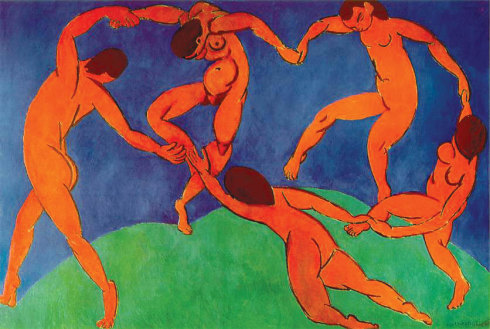
So merry, so nude: Henri Matisse’s La Danse (1910).Credit: Photographic
Nude gallivanting in a forest at midnight: if that’s not the sign of a party that’s reached peak merriment, I don’t know what is. Not a booze bottle in sight, Matisse’s Fauvist fantasy achieves its sense of mystical excess with colour and movement alone, the way those bodies, in all their bulbous glory, float and bend in a hedonistic trance. To be honest, this sort of Dionysian celebration is a bit much for me – it just makes me think of what those rascally kids were up to in the backwoods of Vermont in Donna Tartt’s The Secret History – but we are not here to shame anyone’s kinks. Float away, you flesh-loving freaks.
The Wedding at Cana (1563), by Paolo Veronese
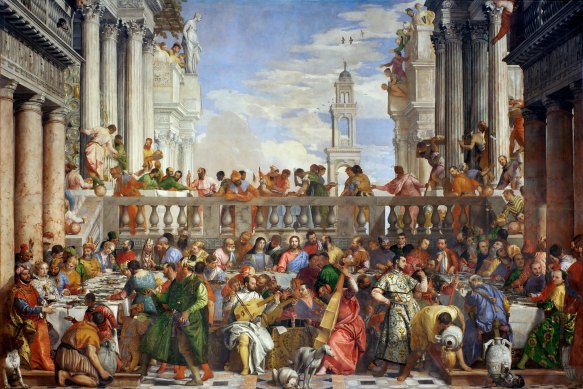
Paolo Veronese’s The Wedding at Cana (1563): the fun Jesus party.
Leonardo Da Vinci’s The Last Supper (1495-98) is the more famous Jesus party, but it’s all dirty plates covered in sad hunks of bread and furious gossiping caused by conspiratorial betrayal – what a downer. The better party is clearly this one, Veronese’s depiction of the moment Jesus turned water into wine. The late Renaissance master paints Jesus smugly, like he’s a DJ who’s dropped the beat and set the party alight. Which he clearly has: you can feel the excitement in Veronese’s bright colours and clamouring masses, the lute-players shredding and the chefs carving roasts, and the awe-struck sommeliers straining under the weight of suddenly flowing barrels of booze.
Untitled (Dance) (1987), by Keith Haring
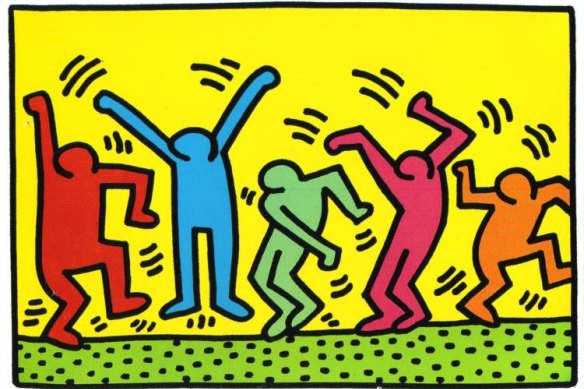
Get into the groove with Keith Haring’s Untitled (Dance) (1987).
It’s amazing how just a few squiggly lines can suggest such celebratory movement. You can pretty much hear the club music – probably Ollie & Jerry’s There’s No Stopping Us, or a soulful Larry Levan 12-inch house remix – blasting from Haring’s painting, his trademark downtown dancing dudes pulling shapes with freeform abandon. If your party’s not bumping like this, you need to pay some attention to your Spotify playlist and drop Madonna’s Everybody stat.
Sunday on the Banks of the Marne (1938), by Henri Cartier-Bresson
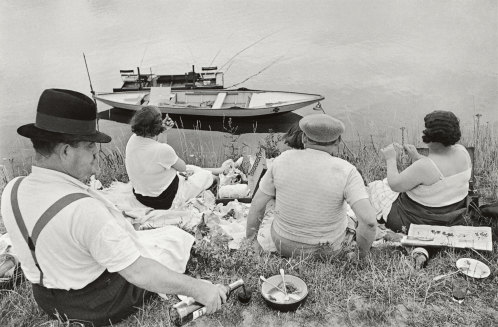
A safe family outing: Henri Cartier-Bresson’s Sunday on the Banks of the Marne (1938). Credit: Nicholas Umek/ NGV
Cartier-Bresson’s New Year’s Eve, Times Square, Manhattan (1959) might be the obvious photo to evoke end-of-year romance but, in the name of consent, let’s not risk it: it feels too close to Alfred Eisenstaedt’s famous photo of that sailor kissing the nurse on VJ Day in 1945, and we all know how that turned out (if you don’t, find it all cannily summarised in Patricia Lockwood’s 2021 novel, No One is Talking About This). This timeless Cartier-Bresson classic feels like a safer bet: it’s just a family’s casual al fresco party by the shore, with BYO wine. It’s the same thing families are doing all around the harbour right now as they try to secure a spot for the 9.30pm fireworks.
The Party (1965-66), by Marisol
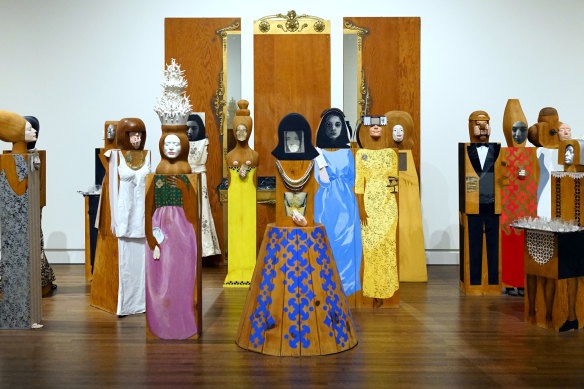
Marisol Escobar’s The Party (1965-66): nice outfits but should’ve just stayed home.Credit: Toledo Museum of Art, © artist’s estate
Here’s one for the introverts, the party-averse, happy to stick to the couch with some bubbly and fireworks on the TV, instead of empty social interactions and awkward chit-chat with tedious strangers. Rather than a fun shindig, this installation’s a piss-take, with Marisol, a Pop Art contemporary of Warhol’s, crafting 15 life-sized wooden totems, each dressed to the nines and sporting her own face in various states of pompous self-regard. Look at these blockheads, they’re barely even mingling! You really made the right choice staying at home.
Desert House Party (1970), by Slim Aarons
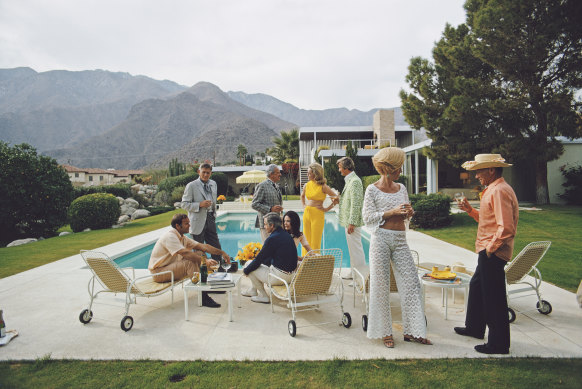
No, not creepy at all: Slim Aarons’ Desert House Party (1970).Credit: Getty Images
A very blue pool and cocktails galore, what’s not to love? It might be Palm Springs, but this is the Australian summer idyll. From the romantic natural landscape to the modernist architecture, the stylish fashion to the Mad Men-ish boozy excess, Slim Aarons’ evocative Poolside Series photos have been fuelling decadent fantasies for decades. But also, sometimes nightmares? I know I’m not the only one feeling those “Scientology upper management” and “Klonopin addiction” vibes seeping in behind the facade, because director Olivia Wilde famously used the photos as inspiration for her creepy incel-thriller, Don’t Worry Darling (2022). Uh, what I mean to say is: everything’s fine, guys! Here, have another Blue Curaçao.
Masked Ball at the Opera House (1873), by Edouard Manet
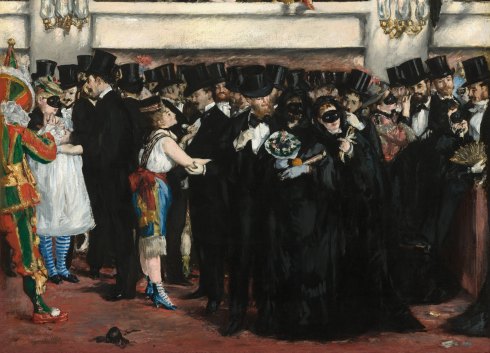
Edouard Manet’s Masked Ball at the Opera House (1873): classy like the opera.
It’s unlikely that your New Year’s party would ever match the levels of sophistication, class and society intrigue seen in Manet’s masked ball, but maybe that’s for the best, because the mass of black outfits and Catwoman masks turn this entire celebration into something eerily funereal, too. Opera, as every film and TV show continuously shows us (think of the tear-strewn cheeks of Julia Roberts in Pretty Woman, Jennifer Coolidge in season two of The White Lotus, Angelina Jolie in Maria), is serious business. Hopefully, for all of our sakes, 2025 isn’t.
The Sugar Shack (1971), by Ernie Barnes
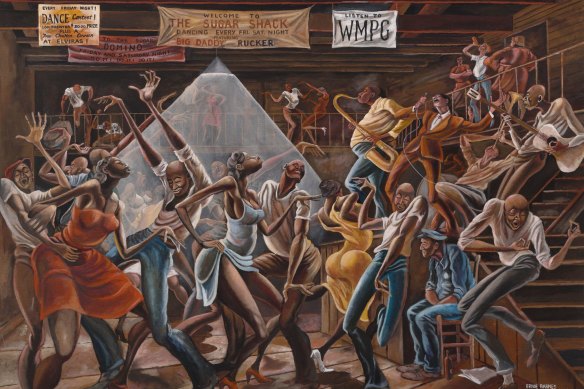
Ernie Barnes’ The Sugar Shack (1971): a party so good it made two album covers.Credit: Collection of William O. Perkins III and Lara Perkins/ Ernie Barnes Family Trust
Now this is a party. Our late-December humidity has me sweating after a cold shower, but that’s still nothing compared to the heat emanating from Ernie Barnes’ dancehall classic. This party’s so hot, and so joyously evocative, that Marvin Gaye made it the cover art for his 1976 album, I Want You, while in 1997 hip-hop duo Camp Lo updated it for their classic, Uptown Saturday Night. Everyone wants to be at this party, limbs swinging and hips grinding like tomorrow’s a day off.
The Meal of Lord Candlestick (1938), by Leonora Carrington
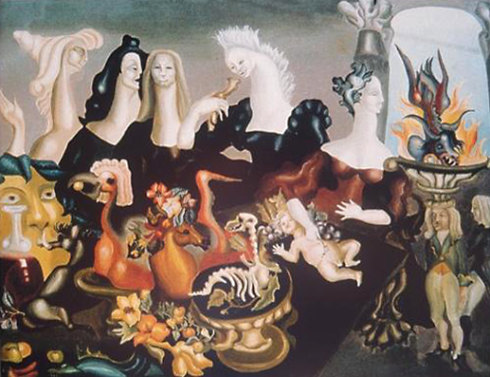
Leonora Carrington’s The Meal of Lord Candlestick (1938): baby food?
Look, I can’t begin to tell you what’s happening in this startling horror show by surrealism’s greatest female artist – except that “Lord Candlestick” was apparently a nickname she used for her father (ouch), paternal head of the banquet table that was her privileged, controlled upbringing – but any party where a glamorous older woman is eating a tiny baby boy with a fork is fine with me. May this rebellious feast be a harbinger for your 2025. Blazing rotten hellscape, we’re coming for you.
To read more from Spectrum, visit our page here.



